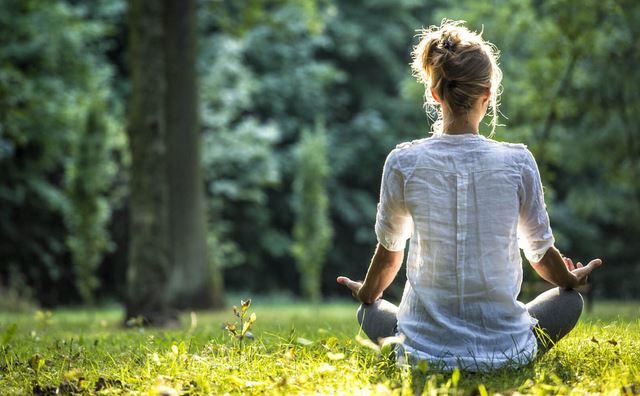A beginner's guide to meditation and mindfulness | |

| |
In today's fast-paced world, it's easy to become overwhelmed by stress, anxiety, and the constant demands of everyday life. Many individuals are turning to meditation and mindfulness as powerful tools to cultivate inner peace, enhance self-awareness, and improve overall well-being. Whether you're a complete beginner or have dabbled in meditation before, this beginner's guide will provide you with a comprehensive overview of meditation and mindfulness, offering practical tips and insights to help you embark on your own journey of self-discovery and tranquility. What is Meditation?Meditation is a practice that involves training the mind to achieve a state of focused attention and heightened awareness. It is often used as a means to calm the mind, reduce stress, and cultivate a sense of inner peace. Meditation has been practiced for thousands of years and is deeply rooted in various spiritual and philosophical traditions. Benefits of MeditationMeditation offers a wide range of benefits for both mental and physical well-being. Regular meditation practice can:
Different Types of MeditationThere are various forms of meditation, each with its own unique techniques and objectives. Some popular types of meditation include: Mindfulness MeditationMindfulness meditation involves bringing one's attention to the present moment without judgment. It emphasizes observing thoughts, emotions, and bodily sensations with curiosity and acceptance. Loving-Kindness MeditationLoving-kindness meditation focuses on cultivating feelings of compassion, love, and kindness towards oneself and others. It involves repeating phrases or visualizations that evoke positive emotions. Transcendental MeditationTranscendental meditation is a technique that utilizes the repetition of a mantra to transcend ordinary thinking and reach a state of deep relaxation and inner peace. Guided Visualization MeditationGuided visualization meditation involves using mental imagery to create a vivid and detailed experience in the mind. It can be used for relaxation, healing, and personal growth. Getting Started with MeditationBefore diving into meditation, it's essential to establish a supportive environment and adopt a few key practices to make your experience more enjoyable and fruitful. Creating a Calm and Serene EnvironmentFind a quiet and clutter-free space where you can meditate without interruptions. Consider adding elements such as soft lighting, candles, or calming scents like incense or essential oils to create a soothing atmosphere. Finding a Comfortable PostureChoose a posture that allows you to be both relaxed and alert. This can be sitting cross-legged on a cushion, using a meditation bench, or even sitting on a chair with your feet flat on the floor. Maintain an upright spine while keeping your body relaxed. Focusing on the BreathOne of the fundamental aspects of meditation is focusing on the breath. Pay attention to the sensation of the breath as it enters and leaves your body. If your mind wanders, gently bring your focus back to the breath without judgment. Dealing with DistractionsIt's common for the mind to wander during meditation. When distractions arise, acknowledge them without judgment and gently guide your attention back to the present moment or your chosen point of focus. Setting Realistic ExpectationsMeditation is a practice, and it takes time to develop proficiency. Avoid placing excessive pressure on yourself and embrace the journey, knowing that consistency and patience will yield progress over time. Cultivating MindfulnessMindfulness is a state of non-judgmental awareness and acceptance of the present moment. It involves paying attention to thoughts, sensations, and emotions as they arise, without getting caught up in them. Here are a few ways to cultivate mindfulness in your daily life: The Art of Being PresentPractice bringing mindful awareness to your daily activities, such as eating, walking, or washing the dishes. Engage your senses fully, notice the details, and savor the experience without rushing or being preoccupied with thoughts. Mindful EatingPay close attention to the taste, texture, and aroma of your food. Chew slowly and savor each bite, noticing the sensations in your mouth and the nourishment it provides for your body. Mindful WalkingTake a mindful walk in nature, focusing on the sensations of each step, the feeling of the ground beneath your feet, and the sights and sounds around you. Allow yourself to be fully present in the moment. Mindful Daily ActivitiesBring mindfulness into your everyday routines, such as brushing your teeth, taking a shower, or engaging in household chores. Use these moments as opportunities to cultivate awareness and be fully present. Incorporating Meditation into Your Daily RoutineTo experience the full benefits of meditation, it's crucial to establish a consistent practice. Here are some tips for incorporating meditation into your daily routine: Establishing a Regular PracticeDesignate a specific time and place for your meditation practice. Consistency is key, so aim to meditate at the same time every day to build a habit. Choosing the Right TimeFind a time of day when you're least likely to be interrupted or distracted. It could be early in the morning, during a lunch break, or in the evening before bed. Experiment with different times to see what works best for you. Starting with Short SessionsIf you're new to meditation, begin with shorter sessions, such as 5-10 minutes, and gradually increase the duration as you become more comfortable. Quality matters more than quantity, so focus on the quality of your practice. Using Meditation Apps and ToolsThere are numerous meditation apps available that offer guided meditations, timers, and other helpful features. These apps can be valuable resources for beginners and provide structure and support for your practice. Overcoming Common ChallengesAs with any new endeavor, meditation comes with its own set of challenges. Here are some common obstacles you may encounter and tips for overcoming them: Restlessness and ImpatienceRestlessness and impatience are common experiences during meditation. Instead of resisting these feelings, observe them with curiosity and acceptance. Allow them to come and go without judgment, knowing that they are a natural part of the process. Dealing with a Busy MindIt's normal for the mind to wander and for thoughts to arise during meditation. When you notice your mind drifting, gently bring your attention back to your breath or chosen point of focus. Be patient with yourself and understand that it takes time to train the mind. Physical DiscomfortSitting still for an extended period can sometimes lead to physical discomfort. Find a posture that is comfortable for you and consider using cushions or props to support your body. If discomfort arises, adjust your position mindfully or try different meditation techniques, such as walking meditation. Maintaining ConsistencyConsistency is key to reaping the benefits of meditation. However, life can sometimes get busy, making it challenging to maintain a regular practice. Remind yourself of the positive impact meditation has on your well-being, and make it a priority even on busy days. Expanding Your PracticeAs you progress in your meditation journey, you may feel the desire to deepen your practice and explore new avenues of mindfulness. Here are some ways to expand your practice: Joining Meditation Groups or ClassesConsider joining a local meditation group or attending meditation classes. Being in the company of others who share the same interest can provide support, inspiration, and guidance. Retreats and WorkshopsAttend meditation retreats or workshops to immerse yourself in a focused and intensive practice. These retreats offer a structured environment and guidance from experienced teachers, allowing you to deepen your practice and gain new insights. Exploring Advanced Meditation TechniquesOnce you feel comfortable with the basics, you may want to explore advanced meditation techniques such as Vipassana, Zen, or Kundalini meditation. These practices delve deeper into specific aspects of mindfulness and self-realization. The Connection Between Meditation and MindfulnessMeditation and mindfulness are closely interconnected. Meditation serves as a formal practice that cultivates mindfulness, while mindfulness extends beyond meditation and becomes a way of living. Both practices work hand in hand to bring awareness and clarity to the present moment. Scientific Evidence and ResearchOver the years, extensive scientific research has been conducted to study the effects of meditation and mindfulness on various aspects of well-being. Studies have shown that regular meditation practice can have positive impacts on mental health, stress reduction, emotional regulation, and cognitive function. The scientific evidence continues to grow, highlighting the potential benefits of incorporating meditation and mindfulness into our lives. ConclusionEmbarking on a meditation and mindfulness journey can be a transformative experience. By dedicating time to quiet the mind, cultivate awareness, and nourish your inner self, you can create a foundation for a more balanced and fulfilling life. Remember, meditation is a personal practice, and there is no right or wrong way to do it. Find what resonates with you, be patient with yourself, and embrace the journey of self-discovery and inner peace. FAQs (Frequently Asked Questions)
| |
| Category: Wellness | |
| Total comments: 0 | |
 |
| The Best Lip Balms for Chapped Lips |
 |
| Creating a Dramatic Evening Eye Makeup Look |
 |
| Choosing the Right Mascara for Volume and Length |
 |
| How to choose Acne Treatment Device |
 |
| Nailing the No-Makeup Makeup Look: Effortlessly Fresh and Natural |
 |
| Must-have wardrobe essentials for every woman |
 |
| The Art of Eyebrow Shaping: A Step-by-Step Guide |
 |
| Tips for Managing Greasy Hair and Scalp |
 |
| Tips for Choosing the Right Hair Color for Gray Coverage |
